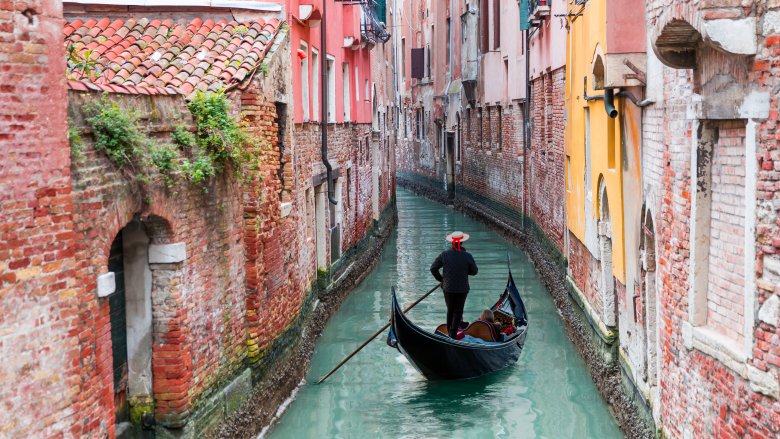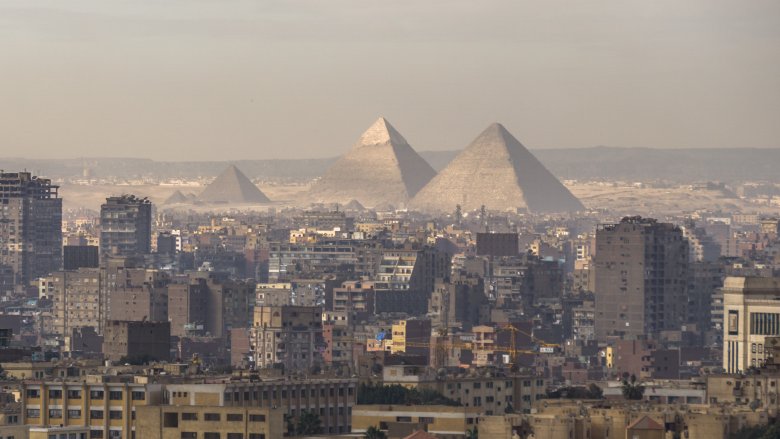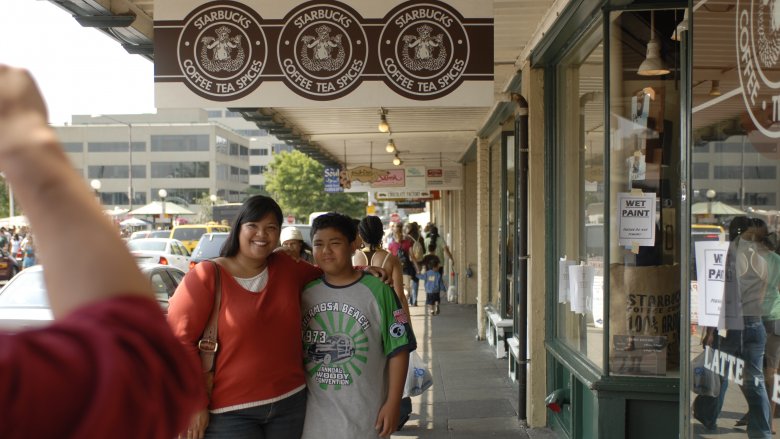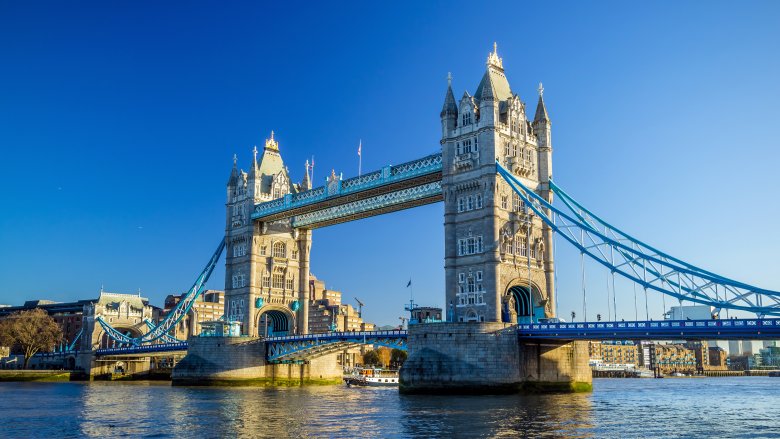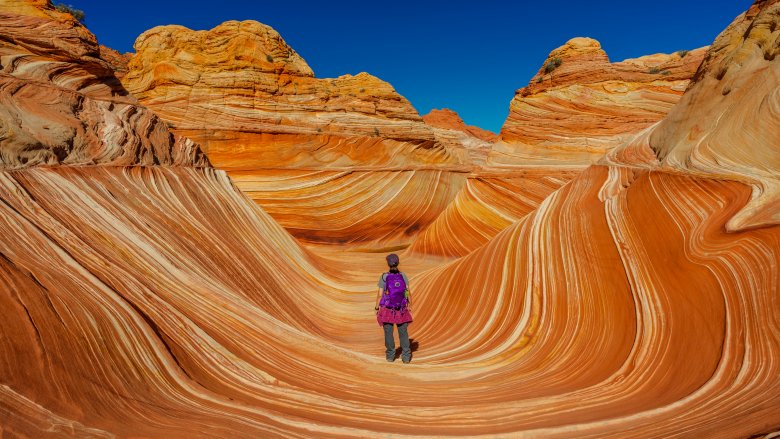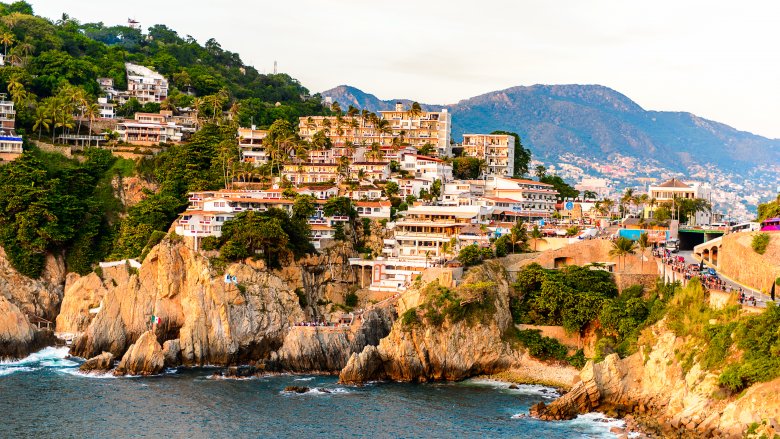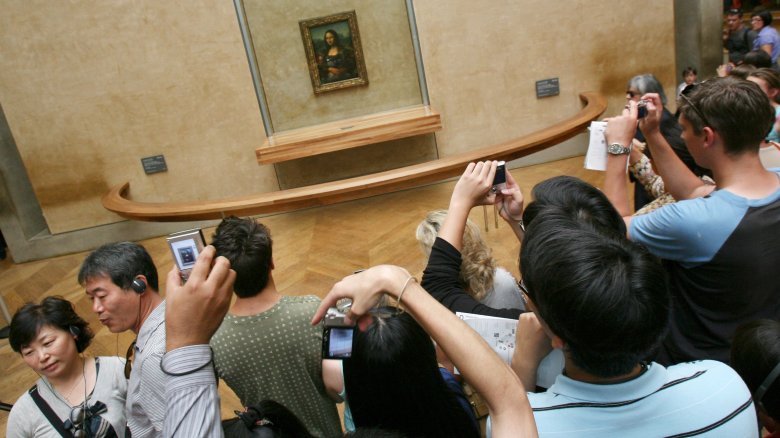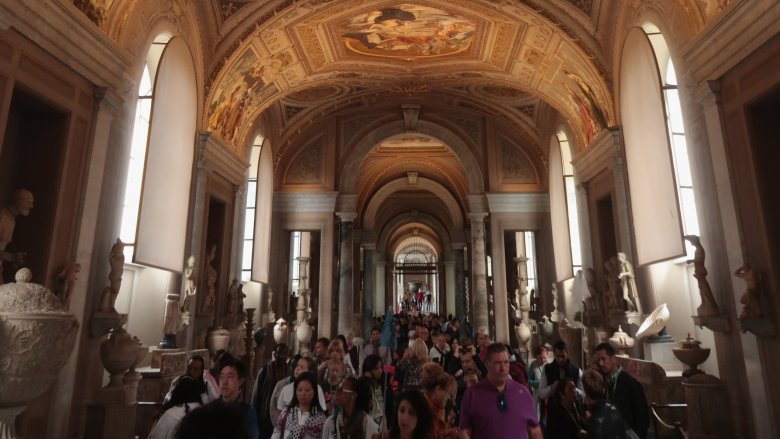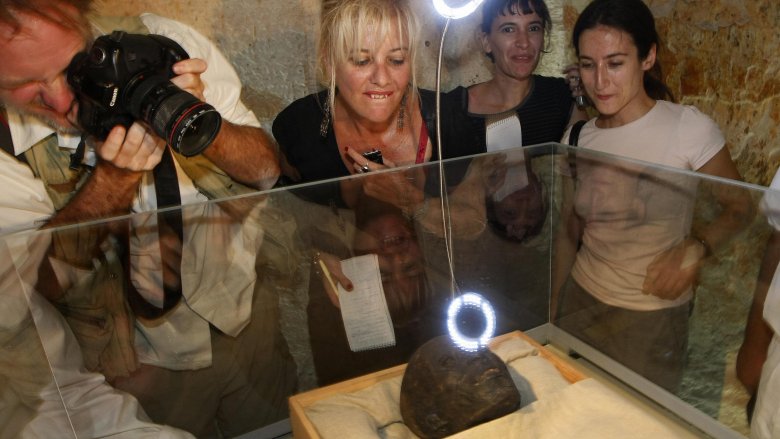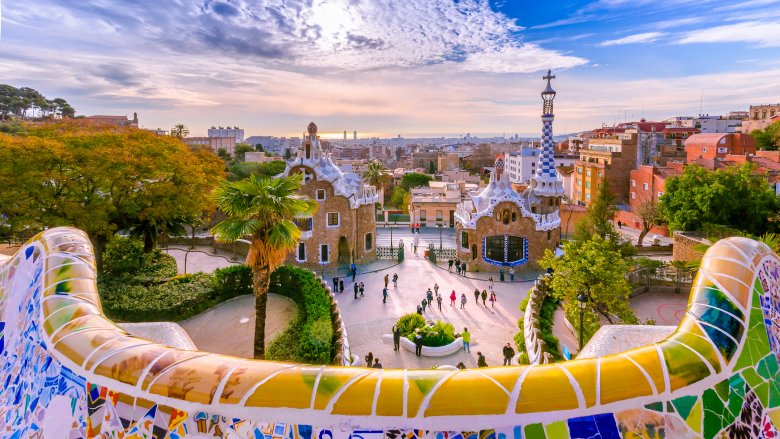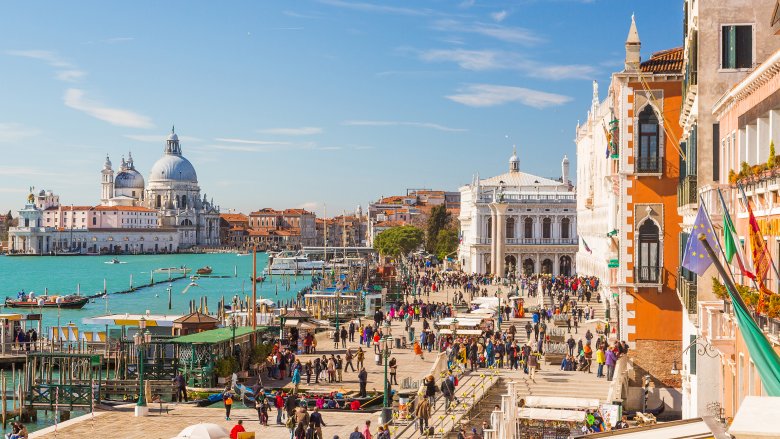Popular Getaways You Should Never Visit
1001 Places to See Before You Die. Top 10 Must-See Sights in Asia. 50 More Incredible Places for the Pantsless Tourist ... we've all seen these articles, and others like them, plenty of times before. And the world is full of spectacular, unforgettable locations — you'd be foolish not to check them out.
But there are the truly spectacular places, and then there are the places that everyone just thinks are spectacular. Visiting these places will leave you feeling either very disappointed, very broke, or very unpopular with the locals. (If you're really unlucky, it might be all three.) Ready to quickly cross some entries off your bucket list without having to haul your Cheetos-stained frame off the sofa?
The Great Pyramid at Giza
The Pyramid at Giza is the last of the Seven Wonders of the World still standing. That fact alone should be enough to land it on anyone's travel wish list, and that's before we mention the sheer architectural magnificence of the structure or its incredible historical importance. Imagine. Standing alone in the ruins of this great, bygone civilization, feeling the hairs on the back of your neck gently rising as the first rays of sunlight pierce the silence. Are you picturing it? Savor that feeling you just created: the real thing is almost nothing like that.
The pyramids today are a lot closer to civilization, about as remote and magically isolated as someone handing out free booze in Times Square on New Year's Eve. The edge of the Great Pyramid itself is just a few hundred yards from tacky hotels and the creep of civilization. You could almost fire a toy catapult from its base and crack the window of a KFC. Or a Pizza Hut. Yup, far from being an unspoiled ancient wonder, the necropolis complex is surrounded by the detritus of Western capitalism. You, lucky soul, can step over McDonald's receipts and other trash on your way to see the Sphinx. However, it also provides plenty of other, slower victims whose souls can be devoured first should Imhotep happen to rise during your visit.
The original Starbucks in Seattle
Starbucks has been serving overpriced coffee to failed screenwriters with laptops since before hipsters first made it cool and then quickly made it really annoying. That kind of longevity buys you things most brands can only dream of: legions of fans desperate to see where it all began. The very first Starbucks at Pike Place Market is a major Seattle tourist attraction. On any given day, you'll see a line outside the door that extends halfway down the block as people giddily wait to get their hands on that sweet, sweet taste of pretty decent coffee. And sure, it's the same coffee you can buy in literally any other Starbucks in existence, but come on: it's the first Starbucks!
Yeah, about that. Time we let you in on a little secret. The "first" Starbucks at Pike Place? It's not actually the original Starbucks at all.
The original Starbucks opened about a block away, six years earlier. The one all those fans are standing in line for is the second Starbucks. The reason no one goes to the first location is it's no longer a Starbucks. So you can still go to a really old Starbucks location in Pike Place (and it is the oldest in existence), but it's the Buzz Aldrin to the original's much-missed Neil Armstrong.
London Bridge
Unless we're talking about Golden Gate, you probably can't think of a single bridge as famous as London Bridge. London Bridge has existed in various forms for nearly 1,000 years. It's the subject of a well-known nursery rhyme about structural failures and shoddy engineering leading to a city-wide catastrophe, and images of it are seared into the minds of schoolchildren around the globe.
Or so we think. Unless you're British or you went to London Bridge, your mental image of London Bridge is almost certainly wrong. The impressive, ornate bridge pictured above is actually Tower Bridge. The real London Bridge is a slab of concrete about as historically impressive as your average shopping mall.
If you want a handy, visual guide, the breathtakingly ornate piece of Victoriana above is Tower Bridge. This smaller but still elegant one is Westminster Bridge. And this drab slice of brutalist nothingness is the world-famous London Bridge. It looks like this because the old London Bridge did, indeed, fall down. Repeatedly. This version was built in the early 1970s, at a time when architects had decided to make the entire world as ugly as possible. Tower Bridge and Westminster Bridge both date from the 19th century and thus look like something you actually might want to visit. Luckily, this conundrum is easily solved if you're at London Bridge. Simply walk 20 minutes along the Thames in either direction and you'll arrive at one of the better bridges.
The Wave, Arizona
An intensely weird rock formation in Coyote Buttes North, Arizona, The Wave (pictured above) is like a living Salvador Dali painting. Multicolored ripples and whorls frozen in rock unspool across an undulating landscape. Visitors have reported vertigo, dizziness, and a sense of awe bordering on the religious. Hiking permits (the only way to visit) are in such high demand that the Park rations them to 20 a day, chosen by lottery. It may be hard to get in, but The Wave is so beautifully, surreally unique that if you're in the neighborhood, you'd be silly not to go. Right?
Well, The Wave isn't unique at all. There's a nearly identical formation called White Pocket just up the road and, unlike The Wave, almost nobody has heard of it. You can turn up whenever you want and have the whole, overwhelming place to yourself.
This is even crazier when you realize that a good number of hikers consider White Pocket to actually be better than The Wave because it covers a much larger area. From their point of view, entering the lottery for a ticket to The Wave is like desperately praying for permission to visit Paris, Texas, while someone else is frolicking around in actual Paris. The only catch is that there's no proper road to White Pocket. You'll need an off-road vehicle or good hiking boots, but you can also have a tour guide drive you in. Still, that seems like a small price to pay to have your mind comprehensively blown.
Acapulco
They call it the Pearl of the Pacific. It's a party-happy, sun-lashed, sparkling city that has hosted Frank Sinatra, Elvis Presley, John F. Kennedy, and more whooping spring breakers than Miami's most bro-tastic beach. It's Acapulco, and it's long been feted as a byword for glamour and good times around the world.
Know what else Acapulco is a byword for? An unspeakably high murder rate.
Acapulco is easily the deadliest place in Mexico, and it's the second most deadly city on Earth right behind the capital of El Salvador. In the first six months of 2016 alone, this idyllic location saw 46 murders per 100,000 people. That was only half the year, so it definitely went up. Have you heard anyone freak out about Chicago's body count lately? Chicago is almost ten times Acapulco's size with an annual rate of about 25 murders per 100,000 people. This isn't to distract from Chicago's problems (which are bad) so much as to point out how insanely murderous Acapulco is.
The killings aren't just confined to slums or "bad" neighborhoods, either. Brutal murders are carried out in broad daylight on tourist beaches. One local news source reported that a cartel laid siege to a hotel where some Mexican cops were staying in early 2016. This is one tourist trap where "getting bombed out" might be less stoner slang and more a terrifying reality.
The Mona Lisa
When Da Vinci painted the Mona Lisa, he didn't know he was creating the most famous image in the world. If he had, he might have grabbed a bigger canvas because the Mona Lisa is tiny. The whole thing measures 30 inches by 21 inches, about the size of that cruddy death metal poster you had in your bedroom as a teenager. It's also just as poorly lit. The actual painting is much harder to make out than all the reproductions you've already seen of it. This is important because actually going to see the Mona Lisa isn't like going to your average art gallery. Tourists report that it's like being in the epicenter of the mosh pit at an Insane Clown Posse concert.
Thanks to a long history of madmen attacking it with knives and rocks, the Mona Lisa is probably the best-guarded woman on the planet. Bouncers keep you at a distance of several yards. Bulletproof glass obstructs your view. In such circumstances, it'd be hard enough to see this tiny, dark painting even if you were alone, but you won't be. Packed in alongside you will be perhaps the sweatiest crowd you've ever seen, getting in your way, elbowing you, and generally acting like the conglomeration of jerks we all somehow turn into when we become tourists.
Our advice? The Louvre has one of the best art collections ever assembled. Within a 30-second walk of the Mona Lisa are treasures beyond your wildest dreams, and people practically ignore them. Why not buck the trend, huh?
Bali, Indonesia
Bali in Indonesia is the island the phrase "island paradise" was coined for. A 2,000-square-mile utopia of sparkling blue water, pristine white beaches, soaring mountains, hyper-attractive locals, and (importantly) dirt-cheap beer, Bali is the heaven all good Australians go to when they finally die. But this is one paradise that might soon be lost. Mass tourism in Bali has triggered a looming water crisis that will leave the entire island fatally parched. The time left until this catastrophe unfolds? It could come as early as 2020, according to researchers investigating the issue.
Being an island and all, the Balinese can't tap freshwater sources like lakes and reservoirs. Instead, locals rely on groundwater trapped deep in the rock. Know what needs a lot of freshwater? A hotel with a pool and hundreds of guests each demanding individual showers. Sixty percent of Bali's water is sucked up by the tourism industry, causing the water tables to drop 165 feet in the last 10 years. And 60 percent of Bali's watersheds are now considered dry. That spells the sort of trouble down the road that's usually accompanied by pitchforks and terrified politicians sprinting for helicopters while trailing misappropriated currency in their wake.
But, hey, we're not here just to dish the bad news. Indonesia is home to 13,000 islands, many of them as awesome as or even more awesome than Bali, with the added bonus that no tourists have yet trashed them. That means you can be the first to instill the locals with an abiding distrust of your fellow countrymen!
The Sistine Chapel
To visit the Sistine Chapel is to step into a building with perhaps the highest concentration of mind-numbingly good art the world has ever produced. Michelangelo spent a combined decade of his life working here, presumably only stopping to periodically snarf down pizza and outwit evil sewer rats. Other incredible Renaissance artists contributed panels or frescoes. Visiting is like being trapped in a kaleidoscope stuck on the "groundbreaking religious art" setting, so it's no wonder that as many as 25,000 visitors can pass through on a single day.
And therein lies the thorny issue. The Sistine Chapel ain't Fenway Park. It was designed for a small-ish number of worshipers. Not only do the huge crowds mean you've got no chance to admire the art, they're actually damaging the art itself. The combined effect of sweat and body heat from 6 million annual visitors is threatening to destroy the ancient frescoes, according to Reuters and The Economist.
Paintings, especially old paintings, are delicate things. Not only is time trying to kill them, but heat, natural light, and humidity are all their enemies. When you have an unholy number of tourists crammed into a small space with them, the effect can be devastating. Thankfully, modern technology means you can simply study the paintings online at your leisure, with the added bonus that you don't have to deal with annoying tourists.
Tutankhamen's tomb
The most famous mummy to not star alongside Brendan Fraser, Tutankhamen was a "boy king" who ruled ancient Egypt from age 9 to his death at age 19. Thanks to his short rule and historical obscurity, his tomb was forgotten — even by grave robbers — until its rediscovery in 1922. At that point, the assembled treasures and stories of a deadly curse caused the world to fall into the grips of a Tutankhamen fever it's never really shaken. And it's causing some serious tourist-related problems.
The whole deal with Tutankhamen's tomb is that it's the best-preserved one we've ever found because it spent thousands of years completely sealed off from the outside world. From the moment the door was cracked open, the rot started to set in. Then tourists started turning up by the bazillion and it became a full-on infestation.
The BBC reports that so many visitors have now entered Tut's tomb that the moisture from their breath has caused the ancient wall paintings to crack and crumble away to nothing. That's after 95 years of exposure. Imagine what will happen in another 100 or 200 years. Luckily, it's possible to visit without contributing to this damage. In 2013, Egypt opened a replica tomb right next door, identical down to one-tenth of a millimeter. You might not be in the presence of actual history but at least your moist breath has a relatively low chance of awakening any ancient curses.
Barcelona
When your city's unofficial anthem is Freddie Mercury busting the highest notes ever to sing your praises, you know you're living in a special place. Anyone who has ever visited Barcelona will agree. The Catalan capital is a monument to fine architecture, fine living, and fine everything. World-famous Gaudi buildings dot a horizon that looks more like a film set than a city, complete with a cast of extras that includes 32 million visitors a year. That's great news if you love well-developed tourist infrastructure, and even better news if you love making life miserable for ordinary Catalans. Wait, what?
Thirty-two million visitors is a lot for enormous cities like New York or London to absorb. For a city with Barcelona's population of 1.6 million, it's like being swamped beneath a tidal wave of overweight day-trippers and shirtless dudes who've mistaken the word "vacation" for the phrase "acting like a drunken jerk-nozzle." The Guardian reports that Barcelona's infrastructure is so overwhelmed it's teetering on the edge. Noise pollution and harassment are making locals' lives hell all summer long. Things have gotten so bad that locals have even organized mass protests against tourism.
Thankfully, there's a solution. Spain is home to dozens of incredible cities you've never even heard of, all of which will be willing to offer you hugs, kisses, and amazing food in exchange for your tourist dollars. Just remember to keep your shirt on, even when drunkenly urinating in the fountains. Don't be rude.
Venice
When it comes to overcrowded tourist cities, there can only be one winner. Venice's historic core has a population of 55,000, stacked against 70,000 tourists visiting it every single day during the busy season. Its narrow walkways, marble plazas, and delicate bridges are so full to bursting in the height of summer that the fastest way to make any progress is probably to arm yourself with a chainsaw and act like you're auditioning for a role in the next Evil Dead.
This makes Venice a kinda sucky prospect for visitors but an even suckier prospect for Venetians. The tourist boom has jacked prices up so much that even an annual salary of about €95,000 (about $105,000) in 2015 wasn't enough to afford a decent apartment, according to The Independent. So why don't locals just move out to the 'burbs and leave the center for tourists? Here we get to the second issue. Venice is built on a lagoon. Moving to the 'burbs means moving to the mainland, a relocation that can result in a two-hour commute to work every single day.
Sure, Venice really is a "last chance to see" place. Experts estimate that climate change could sink the ancient city beneath the waves within a century unless something drastic is done. On the other hand, at least staying away means the locals will get to enjoy their last few dry decades without having to worry about obnoxious tourists hollering at them for not accepting American Express on their gondolas.
